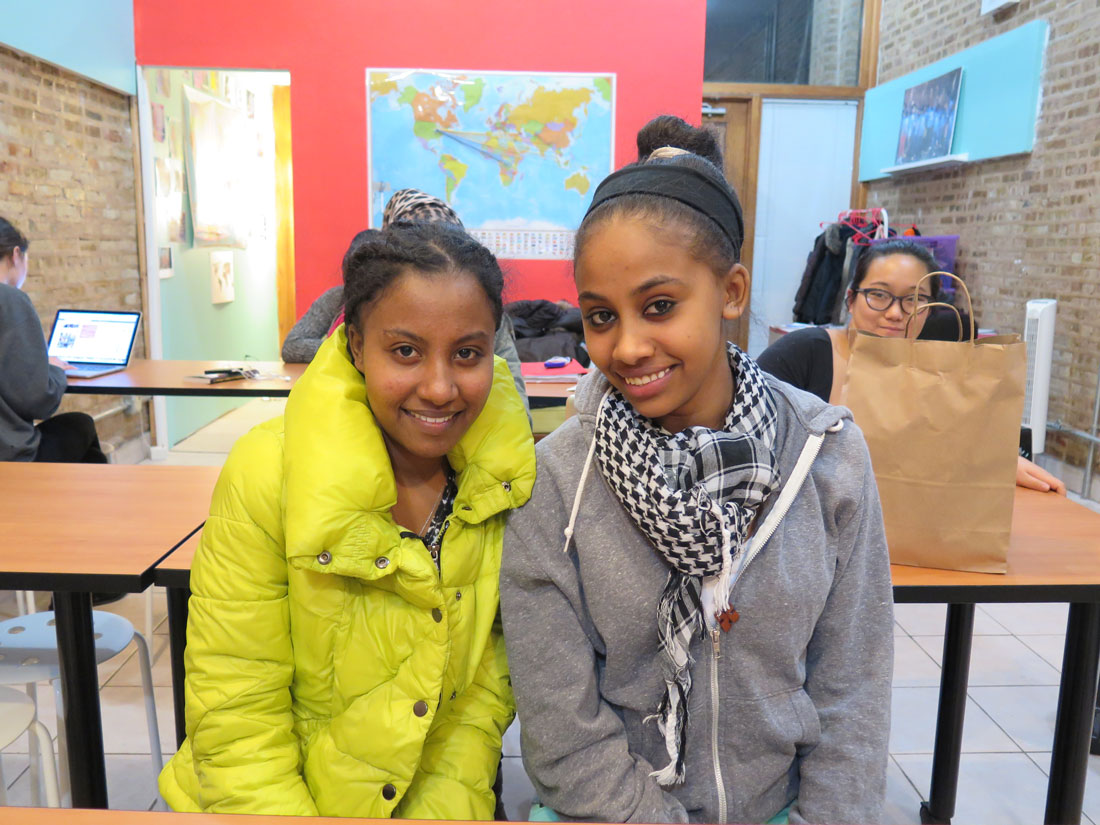By Marisa Endicott
With the Syrian refugee crisis intensifying in Europe and debate stateside over the deportations of Central American asylum seekers, it is easy to get wrapped up in the ideological and political rhetoric instead of getting to know the day-to-day experiences and obstacles resettled refugees face. Access to education is a main hurdle.
“Refugee families have fled violence, but one of the biggest reasons that they want to be here in the United States is for the access to education,” said Ashley Marine, program director at Girl Forward, an educational nonprofit for refugee girls. “The American dream is real for these families.”
Some parents only have an eighth or ninth grade education, so one of their greatest pleasures is to see their children do well in school, explained Suzanne Sahloul, founder of the Syrian Community Network.
But there are a host of complications refugee families encounter in the American education system; Language barriers are the biggest challenge.
Illinois settled almost four percent of America’s 66,517 incoming refugees in 2015 with over half going to Chicago proper, according to the federal Refugee Processing Center. The largest populations resettled in Illinois over the last quarter were Burmese, Iraqi, Congolese, Syrian, Bhutanese and Iranian. With many nationalities come diverse language needs.
Top five refugee nationalities resettled in Illinois between 10/1/15 and 1/31/16 by percentage
[field name=”chart”]
Zamanei Mekonen, 18, is an Ethiopian refugee who grew up in Sudan. When she arrived in 2012 and started as a freshman at Roosevelt High School, she spoke no English. It was difficult to make connections and even find her classes, she said. She had to figure it out on her own since no one spoke her language.
“The reality of teaching in Chicago is…you’re going to have students that are not native English speakers in your class room,” Marine said.
Sullivan High School in the diverse northern neighborhood of Roger’s Park launched an innovative program this school year to ease language transition. Their English Language Learners (ELL) initiative moves students through all their subjects as a cohort, and different language levels are staggered so kids can easily graduate from one level to the next and then transition out of ELL classes all together.
“They spend more time with us than than they do with their parents, especially the refugee kids,” said Sarah Quintenz, an ELL teacher with a brightly painted and decorated classroom. “So I want them to feel like this is a home away from home.”

Unfortunately, programs like this are the exception, not the rule. Many of Chicago’s public schools are massively underfunded and cannot support extensive English second language programming.
“The Chicago Public School system is really fragmented, and not every school has the same support services,” Marine said.
Social as well as academic education is just as important for refugee students. Many of them have experienced interrupted and irregular schooling because of war and migration, so their culture of learning is worlds apart.
In Sudan, school days were short, students returned home to eat lunch and all classes took place in just one room, Mekonen said. Learning how to use a class schedule and spending so much of her life at school has been a big adjustment.
Certain hygiene practices, school dances or even using scissors can be completely foreign concepts, Quintenz said. Plus, social customs and hierarchies can be hard for an average kid to navigate, let alone a newly arrived refugee.
“Social isolation can be really challenging,” Marine said. “In practicing their English, but also in like being a kid and… finding a friend group in a new place.”
There are several nonprofit organizations working to help refugee families with these big transitions. Girl Forward has an academic summer camp, a “safe spaces” initiative with school clubs and drop-in hours and a mentorship program that connects young girls with working professional women.
The Syrian Community Network connects incoming Syrian refugees with the Arab and Muslim community in Chicago. Little things we take for granted go a long way, Sahloul said. “It feels good to speak to someone in your own language.”

With the proper support, refugee youth are more likely thrive. Coming from refugee camps and regions with multiple dialects, many are multilingual and have great potential to adapt.
“These kids are really resilient, and they’ve been through a lot,” Marine noted. “They have an incredible desire to learn.”
Mekonen is excited for college next year, she said. She applied to several schools including Loyola University and Northeastern Illinois University. She doesn’t know what she’ll study yet, but she loves her math classes.
Still, in a country that struggles to fund public education and a state in the middle of a budget crisis, there are many ways that students, native and new, can fall through the cracks.
“Refugee resettlement agencies do great work, but they’re underfunded just like many of the agencies in the city,” Marine explained. “We all have limits to capacity we can serve.”
With refugee migration showing no signs of slowing, prioritizing or maintaining those services are essential to fostering productive future citizens.
As a nation of immigrants, there is “no one who doesn’t have a compelling story, who hasn’t come as a refugee or immigrant,” Sahloul said. “That’s what our country is all about.”

